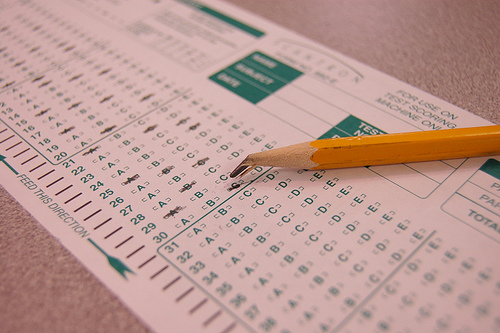
Alexi Saarela figures he saved himself one semester and over $10,000 when he took a two-hour test back in high school.
The CLEP — College Level Examination Program — test, administered during his senior year at Catalina Foothills High School in Tucson, gave him 16 college credits; that’s one full-time semester down.
When he enrolled at University of Arizona in fall 2007, he was, credit wise, a semester ahead.
When he graduated, he didn’t have any student loans, which helped ease the financial burden of taking out loans for medical school.
Saarela is part of a growing trend of students getting an early start to shave time off their college education. According to the Department of Education, fewer than 40 percent of students who enter college nationwide each year graduate within four years; almost 60 percent take six years.
But some students are getting out in four and, in some rare cases three, thanks in large part to programs that let then earn college credits while they are in high school.
Students can earn dual high school and college credits by taking classes at community colleges, or AP and CLEP exams in conjunction with their high school curriculum.
Among its courses, Tucson Unified School District lets students take Writing 101 through Pima Community College. Amphitheater School District in Tucson has classes for college algebra and trigonometry.
Coconino Community College in Flagstaff offers college credit courses through the public high schools. High school teachers lead the college’s courses including history, government, Spanish and engineering.
The boost has helped Northern Arizona University graduate 28 percent of its students in four years or fewer; 48 percent have their degrees in six years, according to 2011 report by the NAU Office of Planning and Institutional Research.
Arizona State University has the best record — 33 percent — when it comes to graduating students in four years or less, according to data from the 2012 College Results Online study, a guide for students choosing perspective colleges nationwide. That report said it still takes at least six years for nearly 57 percent of ASU students to earn their degrees.
Part of that might be because of the two-year Early College Program run thorough Paradise Valley Community College in Phoenix. Students can complete up to 35 units of lower division general education coursework before they start their freshman year of college. Those who complete the program can enter the university as a sophomore.
“It prepared me for college far more than high school did,” said Andrew Stavoe, a UA junior from Phoenix who earned college credits while in high school. “I’m glad I did it because I hated high school and it gave me a reason to leave.”
Stavoe has completed over 140 units — 20 more than the graduation requirement — but he is staying the full four years, he said, so that he can live out the college experience. He is double majoring in economics and political science with minors in history and music.
High school students also get quick college credits through advance placement courses and tests, commonly referred to as AP. Most high schools offer AP courses — accelerated classes similar to honors courses — that prepare students for the exam, which can translate into college credits.
“AP tests are difficult and the classes are a lot of work. But, the tests are worth it and beneficial if you pass them,” said Danielle Hutchens, a UA junior double majoring in biochemistry and Spanish. Hutchens took eight AP tests — each takes two to three hours — in high school, and tested out of 39 units — over two semesters worth of college.
“Because I passed the tests and did well on them, I was able to add a double major. I also didn’t have to take a lot of gen eds (general education courses) or extra units, so I haven’t had to be completely overwhelmed with my schedule or course load.”
The CLEP can be taken in high school through the sophomore year in college. It’s not open to anyone who has already earned 55 credit hours. The 90-minute exam covers 33 subjects including language courses and other general education classes, according to the College Board.
“If you actually know your stuff, it’s definitely worth your money, rather than paying $2,000,” said Saarela, a UA graduate who tested out of 16 units of Spanish through the CLEP. “I think it is a way better and efficient alternative than taking courses for 16 weeks, while I knock it out in about two hours.
“Taking the CLEP allowed me to do a light course load each semester,” he said.
—
Claudia Eastwood is a reporter for Arizona Sonora News, a service provided by the School of Journalism at the University of Arizona. Reach her at ceastwood@email.arizona.edu.

